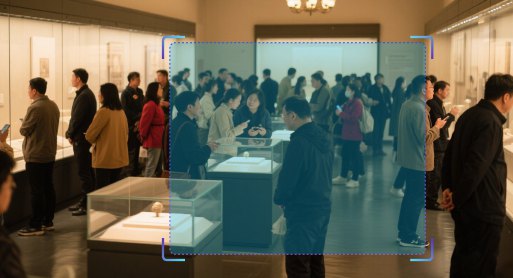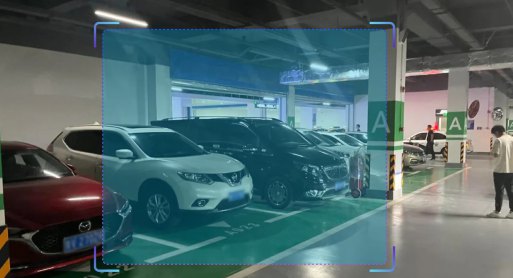
Dynamic Crowd Flow Counting

Algorithm Introduction
Utilizing AI vision algorithms to count bidirectional pedestrian traffic flow through entry/exit passages in public venues such as airports, stations, exhibition halls, scenic spots, schools, and stadiums, enabling real-time crowd guidance, flow control, and early warning for overcrowding risks to support urban management.
- ● Optimal deployment: 2-6 meter medium-close range top-down shooting for fixed entry/exit points and passages
- ● Target recognition: Full-body human detection for cross-line counting in both directions
- ● Brightness requirements: Minimum bright pixel ratio (grayscale value >40) of 50% in the target area
- Image requirements: Optimal detection performance at 1920×1080 resolution
Application Value
-

Metro/Station Areas
The algorithm tracks crowd movement patterns in real time, accurately calculates station entry and exit flows, intelligently plans diversion routes, and efficiently alleviates peak-hour station pressure. -

Scenic Area Security Checkpoints
The algorithm continuously monitors visitor flow data, dynamically adjusting the number of open routes based on real-time traffic to reduce visitor congestion and ensure orderly and safe sightseeing.
FAQ
-
Algorithm AccuracyAll algorithms published on the website claim accuracies above 90 %. However, real-world performance drops can occur for the following reasons:
(1) Poor imaging quality, such as
• Strong light, backlight, nighttime, rain, snow, or fog degrading image quality
• Low resolution, motion blur, lens contamination, compression artifacts, or sensor noise
• Targets being partially or fully occluded (common in object detection, tracking, and pose estimation)
(2) The website provides two broad classes of algorithms: general-purpose and long-tail (rare scenes, uncommon object categories, or insufficient training data). Long-tail algorithms typically exhibit weaker generalization.
(3) Accuracy is not guaranteed in boundary or extreme scenarios.
-
Deployment & InferenceWe offer multiple deployment formats—Models, Applets and SDKs.
Compatibility has been verified with more than ten domestic chip vendors, including Huawei Ascend, Iluvatar, and Denglin, ensuring full support for China-made CPUs, GPUs, and NPUs to meet high-grade IT innovation requirements.
For each hardware configuration, we select and deploy a high-accuracy model whose parameter count is optimally matched to the available compute power.
-
How to Customize an AlgorithmAll algorithms showcased on the website come with ready-to-use models and corresponding application examples. If you need further optimization or customization, choose one of the following paths:
(1) Standard Customization (highest accuracy, longer lead time)
Requirements discussion → collect valid data (≥1 000 images or ≥100 video clips from your scenario) → custom algorithm development & deployment → acceptance testing
(2) Rapid Implementation (Monolith:https://monolith.sensefoundry.cn/)
Monolith provides an intuitive, web-based interface that requires no deep AI expertise. In as little as 30 minutes you can upload data, leverage smart annotation, train, and deploy a high-performance vision model end-to-end—dramatically shortening the algorithm production cycle.






